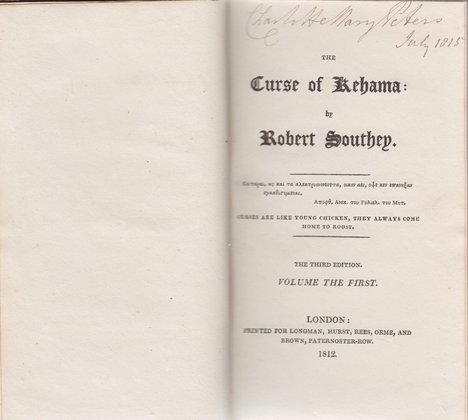Narrative
Popular Poets
23. In 1810, Southey followed up on the publication Madoc with the completion of another epic poem: The Curse of Kehama. As was also the case with Madoc and Mary, The Maid of the Inn, the origins of The Curse of Kehama date back to Southey’s time as a school boy. He began formally composing the poem in 1802, following the completion of Thalaba in 1801. After concurrently working on Kehama alongside other projects, such as a history of Portugal, he made a concerted effort to complete the poem in 1808. This renewed resolve to finish writing Kehama came after his close decision to abandon poetry altogether because of the negative reviews he received for Thalaba and Madoc. In 1809, Walter Scott invited Southey to include an excerpt from the yet unfinished poem in his upcoming collection of poetry, entitled English Minstrelsy (1810). The inclusion of The Curse of Kehama in Scott’s celebrated collection of verse sparked early interest in the poem and, immediately following its completion and publication in 1810, Kehama sold more copies than any of Southey’s previous poems. This edition of Southey’s The Curse of Kehama (1810) was published in 1812 for Longman, Hurst, Rees, Orme, and Brown, Paternoster-Row.
























